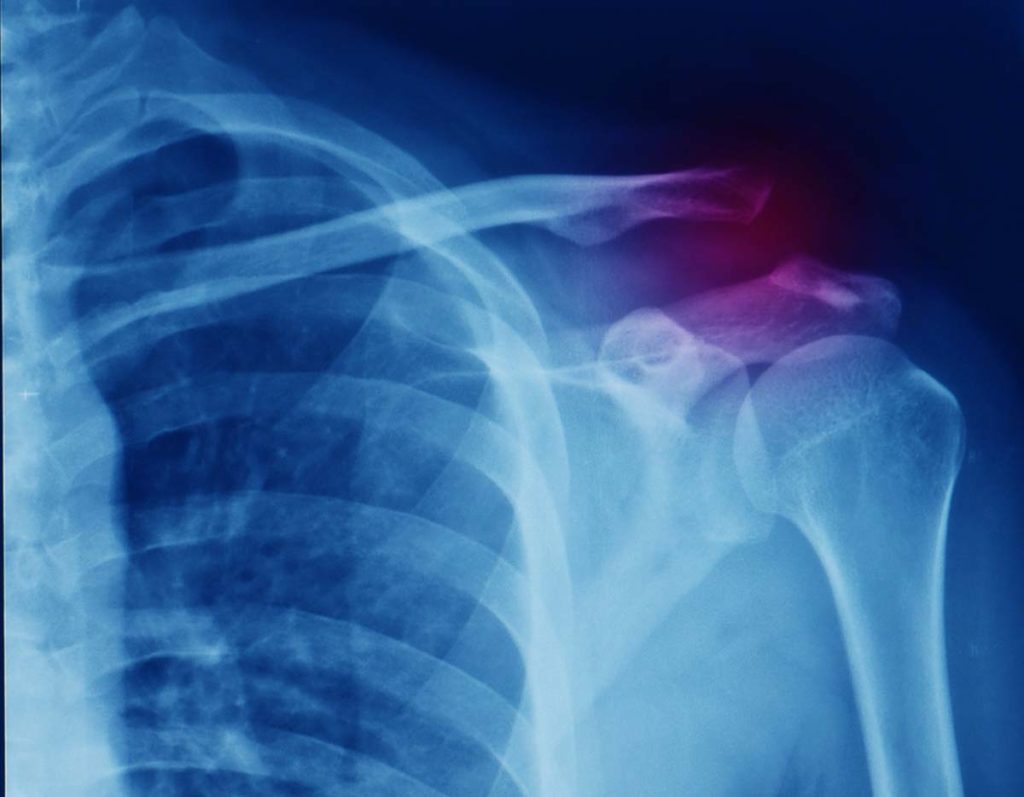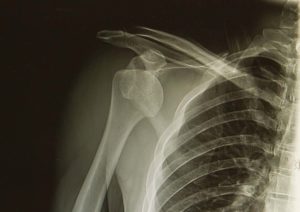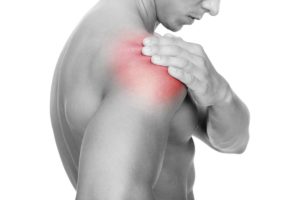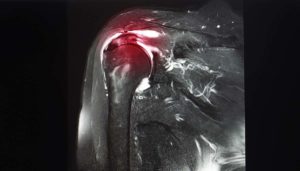
Acromioclavicular Joint (ACJ) Injuries
Typical Symptoms
Injury to the acromioclavicular joint (ACJ) can cause limitation to all movements around the shoulder. It is usually localised to the top of the shoulder and there can be swelling, redness and stiffness. The common movement that aggravates ACJ pain specifically is touching the opposite shoulder as this compresses the joint.
If there is an acute injury, there can be an obvious deformity of the ACJ or bone, sometimes with a step change or separation.

What causes it?
As it is the main point of contact between the arm and the body, all movements of the arm tend to cause pain.
Symptoms can occur from a direct trauma to the joint (such as landing on this after falling off a bicycle), an indirect force through the joint (such as landing on an outstretched arm) or it can be due to degenerative (wear and tear) changes such as from heavy lifting or weight training.
In an acute injury with separation, grade is classified according to the Rockwood classification.
How can I help myself?
If the symptoms came on gradually, it may be from a chronic degenerative change and hence it is useful to consider what activities continue to aggravate it. By modifying these activities, it can help to offload the joint and may settle symptoms. Working with a coach or a sports therapist to look at muscle tightness can help.
For acute injuries, it may be helpful to rest the shoulder in a sling or similar support to limit movement and hence reduce the need for the ACJ to experience additional stress.
Placing ice over the joint can help limit swelling and stiffness, while pain can be treated with medication. Analgesia, such as anti-inflammatories, can help reduce pain and swelling symptoms.
When to seek help?
If you have sustained an injury to the shoulder acutely either as a direct or indirect force, you should have the injury assessed as soon as possible to determine its severity and if there are concurrent changes.
For more degenerative changes, if symptoms are not resolving with modifying activities or technique, then it maybe worth looking into further.
What are the treatment options?
After your clinician assesses you with a history and clinical examination, an X-ray may be undertaken to identify the degree of separation/injury to the ACJ/clavicle after an acute injury. In situations where the X-ray is unchanged, a same day ultrasound scan can help identify if there is swelling or inflammation to the joint.
For most minor injuries, it can be improved with analgesia and rehabilitation, but if there is an associated fracture or a higher grade of injury, surgical treatment maybe needed. If symptoms are due to chronic degenerative changes, sometimes an ultrasound guided cortisone or PRP injection can help with symptoms and enable rehabilitation to be undertaken.




